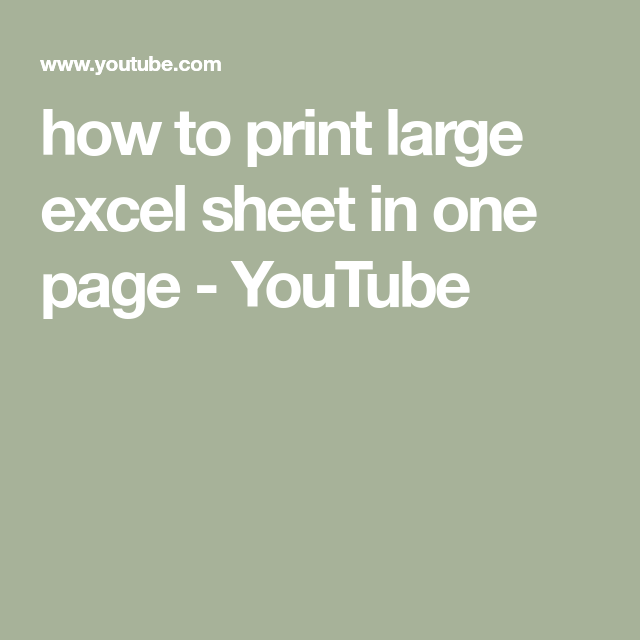2 Ways to Print Multiple Pages on One Sheet in Excel

Method 1: Using Excel's Built-in Print Options

Excel offers several built-in features to help users manage their printing needs effectively. Here's how you can print multiple Excel pages onto a single sheet:
- Open your Excel Workbook: Ensure you're working in the workbook that contains the pages you wish to print.
- Select the Print Area: Highlight the range of cells or entire sheets that you want to print. If you're printing an entire worksheet, you can skip this step.
- Access the Print Menu: You can do this by either:
- Pressing Ctrl + P on Windows or Command + P on a Mac.
- Using the File tab to access Print.
- Adjust Printer Properties:
- Click on 'Printer Properties' or 'Print Setup' to open the advanced print settings.
- In the printer properties, look for an option named "Pages per Sheet," "Multiple Pages per Sheet," or similar.
- Set the Number of Pages: Choose the number of pages you want to print on one sheet. Common settings include 2, 4, 6, 9, or 16 pages per sheet.
- Preview and Print: Before printing, use the preview feature to ensure everything looks correct. Adjust margins or page layout as necessary, then proceed with printing.
🔍 Note: The exact steps can vary slightly based on the printer model and its drivers. If your printer does not support this feature directly, consider the second method.
Method 2: Using PDF Conversion Software

When Excel's native print options are not sufficient, PDF conversion software can be a handy alternative for printing multiple Excel pages onto one sheet:
- Convert Excel to PDF: First, you need to convert your Excel document into a PDF:
- In Excel, go to 'File' > 'Save As' or 'Export', select PDF format, and save the file.
- Use third-party tools like Adobe Acrobat or online converters to change your Excel file into a PDF if the built-in option is not available or sufficient.
- Open the PDF: Open the newly created PDF file in a PDF reader that supports page layout modifications.
- Configure Printing Options:
- Go to the print settings or print dialog box within the PDF reader.
- Look for options like "Multiple Pages per Sheet," "N-up," or similar.
- Choose Page Layout: Decide how many pages you want to print on one sheet. Here, you can often select whether pages should be arranged horizontally or vertically.
- Adjust Print Settings: Configure any additional settings such as scaling, orientation, and margins to fit your requirements.
- Print: After reviewing the preview, proceed to print your document.
🔍 Note: Ensure your PDF software supports the required features. Tools like Adobe Acrobat or Foxit Reader are known for their advanced print options.
The methods described above offer a practical approach to printing multiple Excel pages on one sheet, which can save paper, reduce clutter, and make information more digestible:
- Excel's print features allow for quick adjustments within the application.
- PDF conversion provides flexibility for both Excel and non-Excel users, particularly when dealing with complex layouts or different printer capabilities.
- The choice between the two depends on the user's access to tools, the complexity of the document, and the desired outcome in terms of readability and format.
By mastering these techniques, you can optimize your printing processes, enhancing efficiency and reducing environmental impact. Whether it’s for personal use or professional presentations, this knowledge empowers you to handle your documents more effectively.
Can I print multiple pages on one sheet without using PDF?

+
Yes, if your printer supports it, Excel’s print settings allow you to do this directly through the “Pages per Sheet” option.
Does printing multiple pages on one sheet reduce print quality?

+
It can reduce the legibility if pages are overly shrunk. However, with the right settings, the quality remains acceptable.
What are the advantages of using PDF software for this purpose?

+
PDF software often offers more layout flexibility, consistency across different printers, and advanced page manipulation options.



